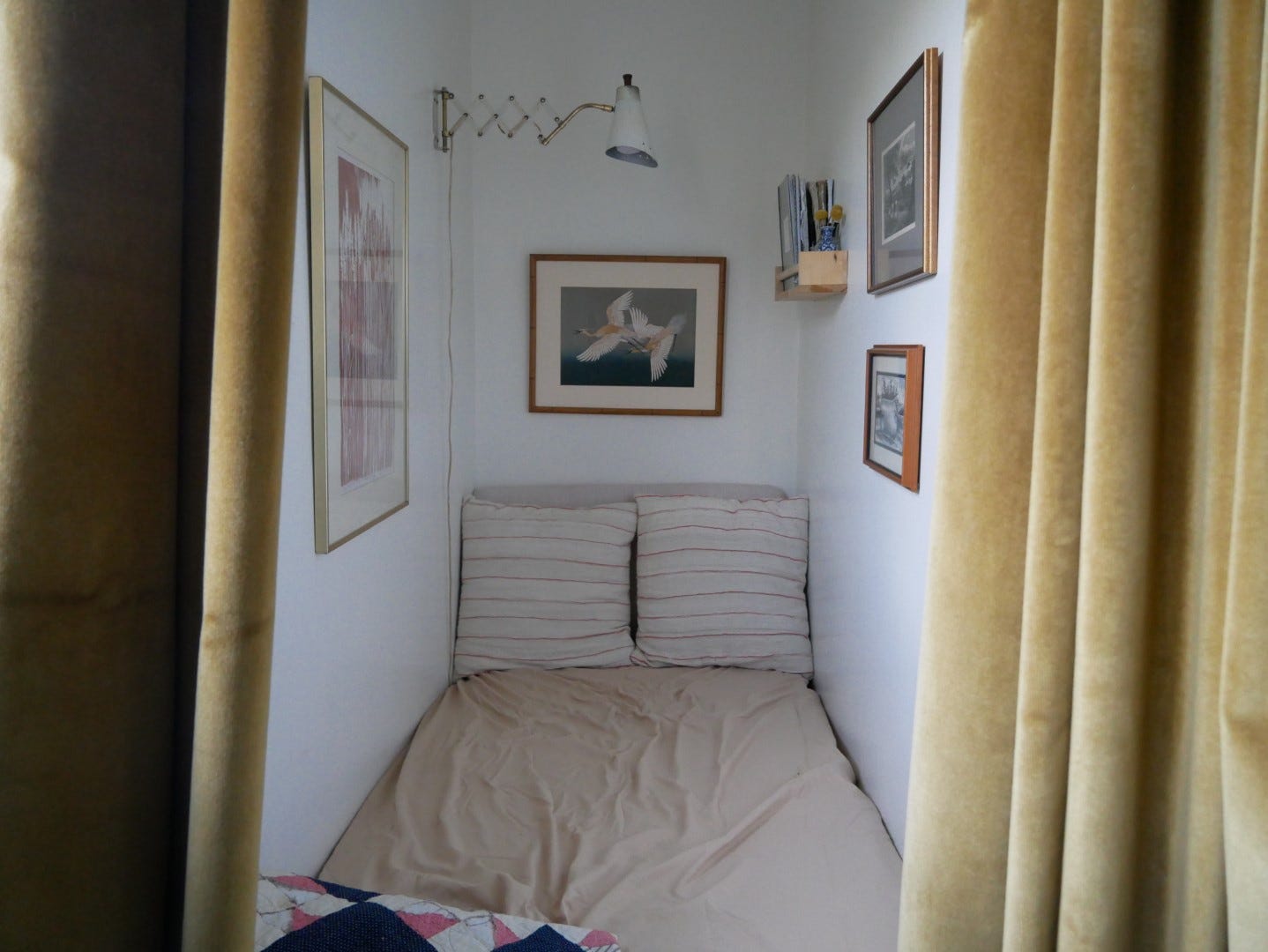The Imperfect Rooms of a Beautiful World
The Isabella Stewart Gardner Museum, eccentric living spaces, and the art of losing.
One of my favorite museums is the Isabella Stewart Gardner Museum in Boston, a few blocks down the street from where I went to undergrad. I could go for free with my student ID, and thus spent many afternoons loafing around, wandering the rooms, staring at the places where only a rectangle of discoloration showed on the walls because it was where a painting had been stolen.
I’ve always been a bit of a sucker for eccentrics, and Gardner was just one of those–there’s an anecdote about her taking a lion in the zoo out for a walk. When she died, she stipulated that nothing could be moved or changed in the museum, leaving the staff legally incapable of replacing stolen paintings. Eccentric indeed.
I have always wanted to live in a beautiful world. It could be called a desire, a gift, even a fault. For sometimes it’s a sort of delusion, to see things surrounded in a gauze of wonder, to always be wearing rose-colored glasses.
But that’s not what I mean by beauty, not at this point in my life. Beauty, I have found, does not exclude pain or heartbreak, nor does it reside anywhere near the realm of perfection. I have walked into some objectively “beautiful” places that have left me feeling cold and some rather “ugly” ones feeling rejuvenated. No, what I find beautiful is alive and vulnerable, intimate. Places, both physical and otherwise, that are meaningful because of how deeply personal they are.
Gardner believed art should be experienced more than studied, and thus most of the art is without labels or even the artists’ names. She invited painters and musicians to use museum rooms as studios, and Gardner herself lived there, in an attached private apartment. It is enormous for a house, and somewhat small for a museum, and in every way particular. In the center of the building is an interior garden, which can be looked down upon from every level: plants and paintings coexist, with many nooks to sit around in.
I enjoy that it is not a blank slate–not white walls and endless glass–but more like an old villa in Italy, which is where most of the building materials came from. Admittedly, I haven’t been back to the museum since its new wing was added–so alas, there could be plenty of white walls now. Being a bad Millennial, I am terrified of white walls. And what I mean by white walls is not exactly literal–I live among them now, in my generous friend’s rented house–but of the soulless perfection my generation initiated, of marble islands and steel framed windows, of interiors meant to be seen on the internet more than they are meant to be lived in.
Americans spend a daily average of six hours and forty minutes looking at screens, and that has changed our perception of beauty. In the real world, things are softer, weirder, and more alive; on a screen they become mostly one dimensional. This is not to say that screens are bad and nature is good, but that screens have changed our perception of the real world.
If you have ever been on the set of a movie or a television show, you know that in real life the sets look pasted together, walls held together by duct tape, podiums falling apart, all to be fixed by lighting. The real world has started to feel a little like that: as something secondary, to be viewed through the lens of a computer or phone. Something to be fixed. There is a difference between being seen and being known, and places are no exception.
I’ve lived in rented spaces for most of my adult life, but I’ve always aimed to create my own versions of Gardner villas: a space that feels intimate and alive and full of art and–most importantly–lived in.
In the last few years, I have lived in some eccentric places. Most recently, we lived without a shower and washed our dishes in the bathroom sink. Oddly enough, it was one of my favorite places I’ve ever inhabited. Using Ikea shelves, we divided the room with plants, books, and dishes. I was in the best shape of my life, since I went to the YMCA to shower, and I loved living in a large, single room, with everything in my reach.
We have since left our showerless back house and now live above our friends’ garage–never has a shower felt so luxurious. Our current kitchen was once a dark room. We have put large mini fridges on the counters. With an induction hot plate, we can cook most things, and we now have an enormous photography sink wherein to wash dishes.
I used to think I needed more. But now, I feel gratitude. I’m thankful to be given a safe place to live at a prorated cost so that I can focus on being an artist. There are always multiple ways to view one’s circumstances, and I think we’re most often encouraged to view them through a filter of lack, or comparison. There are very real wealth gaps in this nation but money is not the sole solution. There are plenty of unhappy rich people, for instance. (I know because when I lived in that back house, they were my neighbors.)
Though we haven’t had a living room for a few years–which is usually where I like to write–we’ve been able to create what I like to call “writing nooks” in our last two places, which are tucked away single cots that have doubled as modest guest beds. We found some comfortable vintage chairs off of Craigslist for our dining room/office–as well as many other pieces we’ve picked up off the street. Our rooms, though small, feel abundant.
Gardner had planned to build her museum with her husband, Jack Gardner, but he died shortly before they could buy the land. Still, she went on and built this place amidst her heartbreak. There is a cost to all of our lives, and it can be comforting to recognize this imperfection in design–to allow stolen paintings to remain stolen, to let what is imperfect remain so. That is why we look to art: to reflect real life.
Most of us are terrified of loss, and I am no exception. Living amidst uncertainty requires a type of art making all in itself–perhaps the most important art of all. The poet Elizabeth Bishop chronicles this tenuous relationship with great clarity in her poem “One Art.”
The narrator throughout “One Art” attempts to convince herself that though she loses everything over the course of her life–“cities,” “names,” “keys,” and “you”–“the art of losing isn’t hard to master.”
But of course it is. Whatever we create, write, live, we must also give up at some point.
We do not live forever.
Our home of Craigslist and garage sale items includes art, mostly made by us and our friends, and a lot of plants. These things were sold cheaply to us, or given away, by those who moved on for one reason or another. All of these things are imperfect. Nature is especially imperfect–marred by weather and seasons–as are we. Nothing is less beautiful for having actually lived.
I dream of someday owning a home like Gardner’s, to share with my artist friends, but whether or not this rose-colored vision ever comes true, I am grateful to be surrounded by beauty now, though I know it is temporary, and of course, imperfect.








